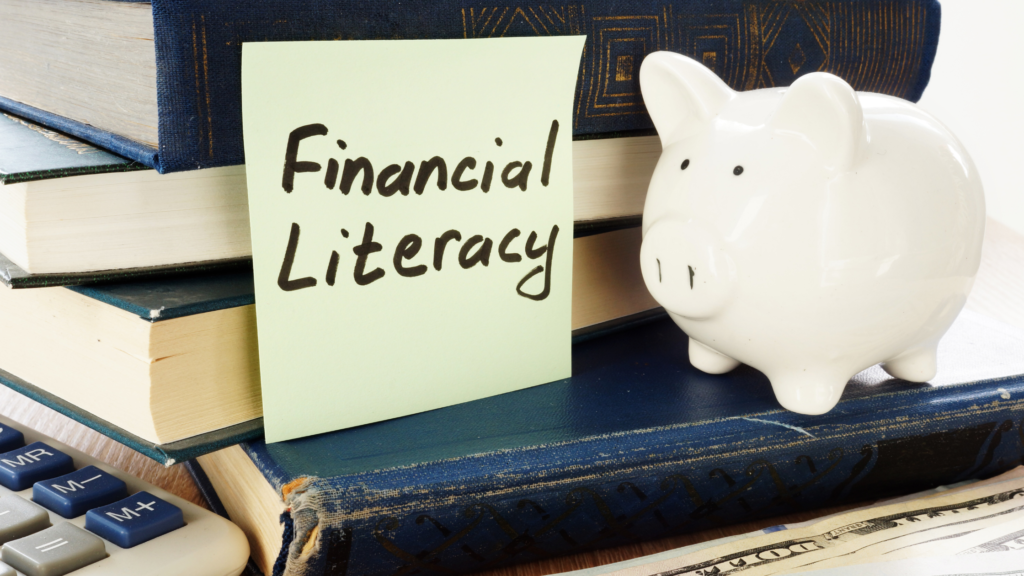Financial literacy is a critical skill that empowers individuals to make informed financial decisions, manage their resources effectively, and achieve economic stability. In underserved areas, financial literacy programs can play a transformative role, fostering economic empowerment and community development. Bottom Billion Corporation (BBC) is dedicated to promoting financial literacy as part of its mission to support sustainable development and improve living standards. This article explores the importance of financial literacy programs in underserved areas, highlighting strategies, benefits, challenges, and success stories.
The Importance of Financial Literacy Programs

Financial literacy programs are essential for several reasons:
- Economic Empowerment: Financial literacy equips individuals with the knowledge to manage their finances, save for the future, and make informed investment decisions, leading to greater economic independence.
- Reducing Poverty: By teaching individuals how to budget, save, and invest wisely, financial literacy programs can help break the cycle of poverty in underserved communities.
- Enhancing Financial Inclusion: Financial literacy programs promote financial inclusion by providing individuals with the skills needed to access and use financial services effectively.
- Building Resilient Communities: Financially literate individuals are better prepared to handle economic shocks and uncertainties, contributing to more resilient and stable communities.
Key Strategies for Implementing Financial Literacy Programs
Implementing effective financial literacy programs requires a comprehensive approach that addresses the unique needs and challenges of underserved areas. Here are some key strategies:
Community Engagement and Partnerships
Engaging the community and building partnerships with local organizations, schools, and businesses is crucial for the success of financial literacy programs. Collaborative efforts can help identify community needs, tailor programs to local contexts, and leverage existing resources and networks. For example, partnering with local schools to incorporate financial education into the curriculum can ensure that young people receive essential financial skills early on.
Culturally Relevant Curriculum
Developing a culturally relevant curriculum that resonates with the target audience is essential. This includes using language, examples, and scenarios that are familiar and relatable to the community. Tailoring the curriculum to address specific financial challenges faced by the community, such as managing irregular income or accessing microfinance services, can make the program more effective and impactful.
Utilizing Technology and Digital Tools
Leveraging technology and digital tools can enhance the reach and effectiveness of financial literacy programs. Mobile apps, online courses, and digital resources can provide accessible and flexible learning opportunities. In areas with limited internet access, offline solutions such as pre-loaded educational tablets or mobile financial education units can be effective alternatives.
Training and Capacity Building
Training local trainers and educators to deliver financial literacy programs can ensure sustainability and community ownership. Capacity building efforts should focus on equipping trainers with the knowledge, skills, and resources needed to effectively teach financial literacy concepts and support learners. Continuous professional development and support for trainers can help maintain the quality and relevance of the programs.
Benefits of Financial Literacy Programs
Financial literacy programs offer numerous benefits for individuals and communities:
Improved Financial Management
Financial literacy programs teach individuals how to budget, save, and invest wisely, leading to better financial management and increased savings. This can help individuals achieve their financial goals, such as buying a home, starting a business, or funding education.
Increased Access to Financial Services
Financial literacy programs promote financial inclusion by providing individuals with the skills needed to access and use financial services effectively. This includes understanding how to open and manage a bank account, apply for loans, and use digital financial services.
Enhanced Economic Opportunities
Financial literacy programs can open up new economic opportunities for individuals by equipping them with the knowledge and skills needed to start and grow businesses. This can lead to increased income, job creation, and economic development in underserved areas.
Greater Financial Resilience
Financially literate individuals are better prepared to handle economic shocks and uncertainties, contributing to greater financial resilience. This includes understanding how to build an emergency fund, manage debt, and plan for retirement.
Challenges and Solutions in Financial Literacy Programs
While financial literacy programs offer significant benefits, they also face several challenges:
Limited Resources
Many financial literacy programs operate with limited resources, which can hinder their ability to reach and impact underserved communities. To address this challenge, organizations can explore alternative funding sources such as grants, donations, and partnerships with businesses and financial institutions. Leveraging volunteer trainers and utilizing low-cost digital solutions can also help maximize resources.
Language and Cultural Barriers
Language and cultural barriers can pose challenges in delivering financial literacy programs effectively. Developing culturally relevant curriculum and using local languages can help overcome these barriers. Engaging community leaders and influencers can also facilitate communication and trust-building with the target audience.
Measuring Impact
Measuring the impact of financial literacy programs can be challenging due to the long-term nature of financial behavior changes. Organizations can use a combination of quantitative and qualitative methods to assess the effectiveness of their programs. This includes pre- and post-program surveys, focus groups, and tracking financial behavior changes over time.
Success Stories in Financial Literacy Programs
Fundación Capital is a social enterprise that promotes financial inclusion and economic empowerment through innovative financial education programs. One of their successful initiatives is the LISTA program, which provides digital financial education to low-income women in Latin America. Through mobile apps and tablets, LISTA delivers interactive lessons on budgeting, saving, and using financial services. The program has reached over 200,000 women, helping them improve their financial skills and access financial services.

The Smart Campaign is a global initiative that promotes client protection in the microfinance industry. As part of their efforts, they provide financial education to microfinance clients to help them make informed financial decisions. The campaign has developed a set of Client Protection Principles that include educating clients about their rights and responsibilities, transparent pricing, and preventing over-indebtedness. By promoting financial literacy, the Smart Campaign helps ensure that microfinance clients can use financial services safely and effectively.

Financial literacy programs are a powerful tool for promoting economic empowerment and community development in underserved areas. By providing individuals with the knowledge and skills needed to manage their finances, access financial services, and seize economic opportunities, these programs can help break the cycle of poverty and build more resilient communities. Organizations like Bottom Billion Corporation play a crucial role in supporting financial literacy initiatives that align with their mission to promote sustainable development and improve living standards. Through community engagement, culturally relevant curriculum, and innovative solutions, financial literacy programs can create lasting positive change and contribute to a more inclusive and equitable world.

